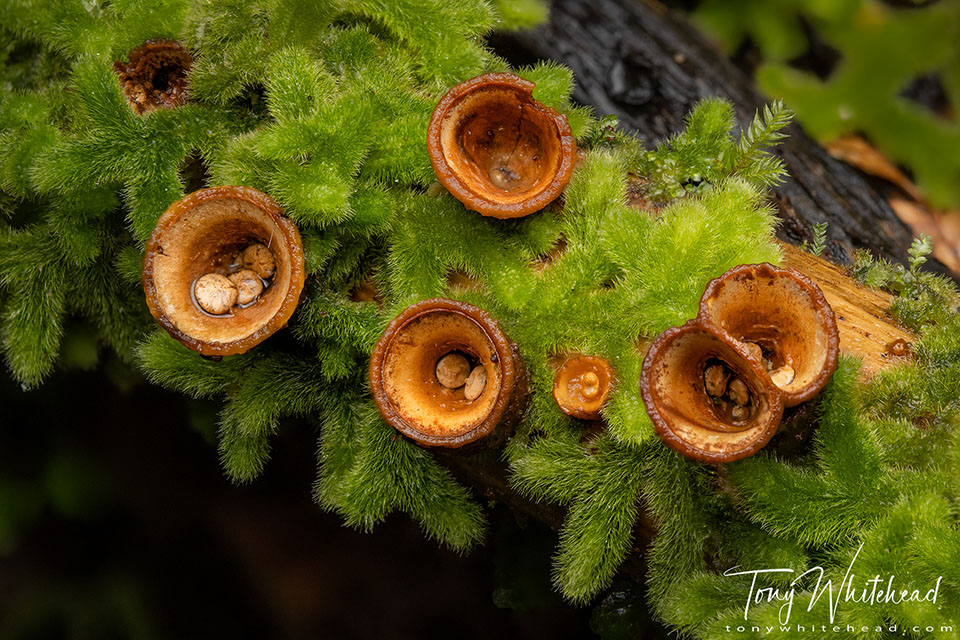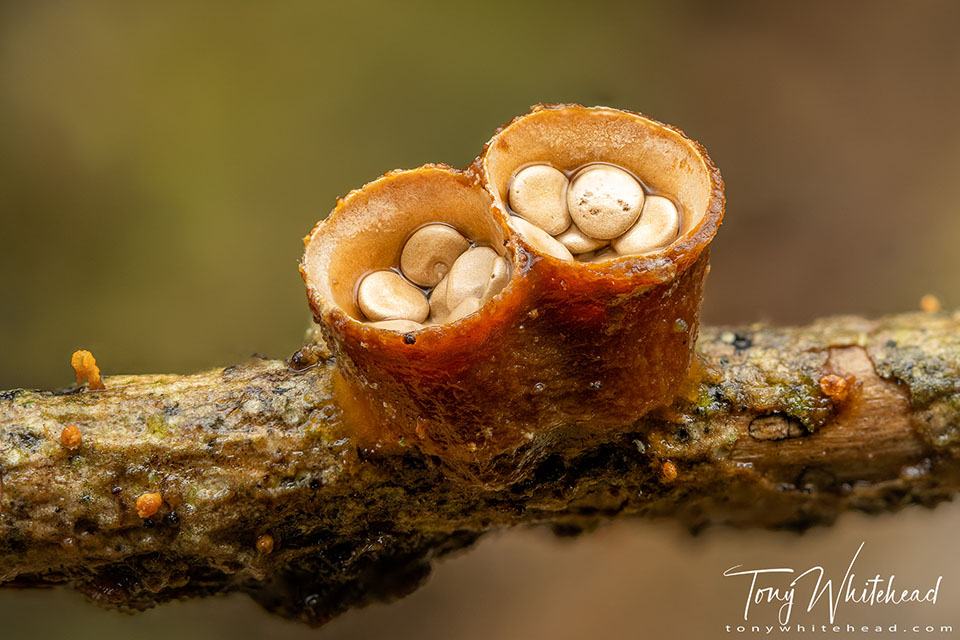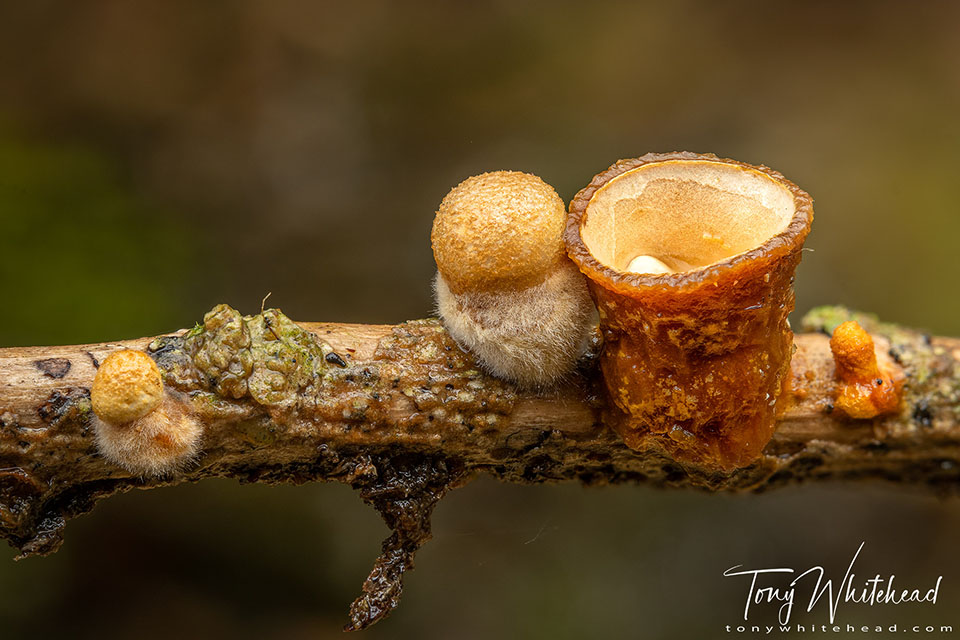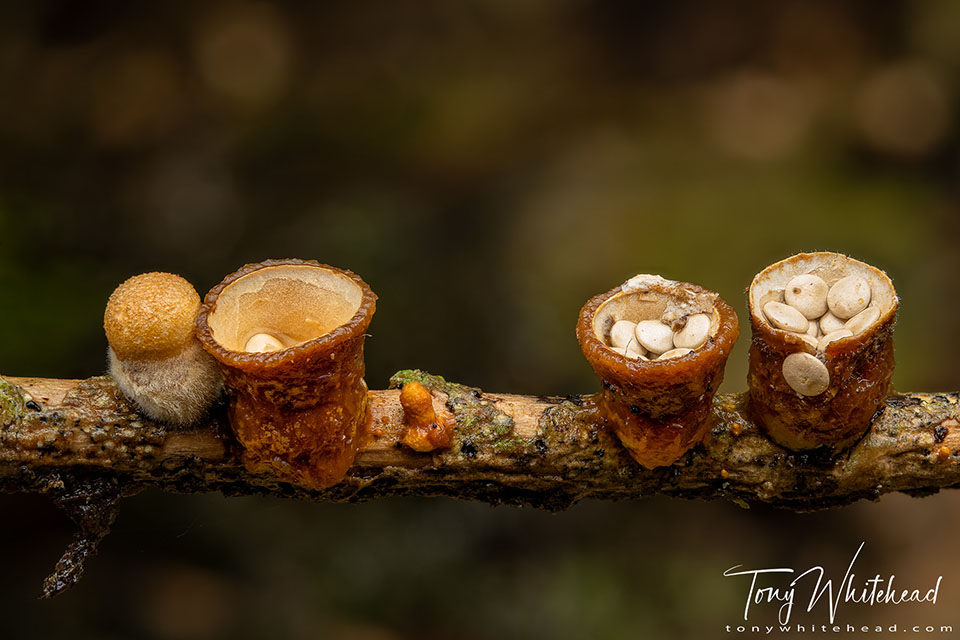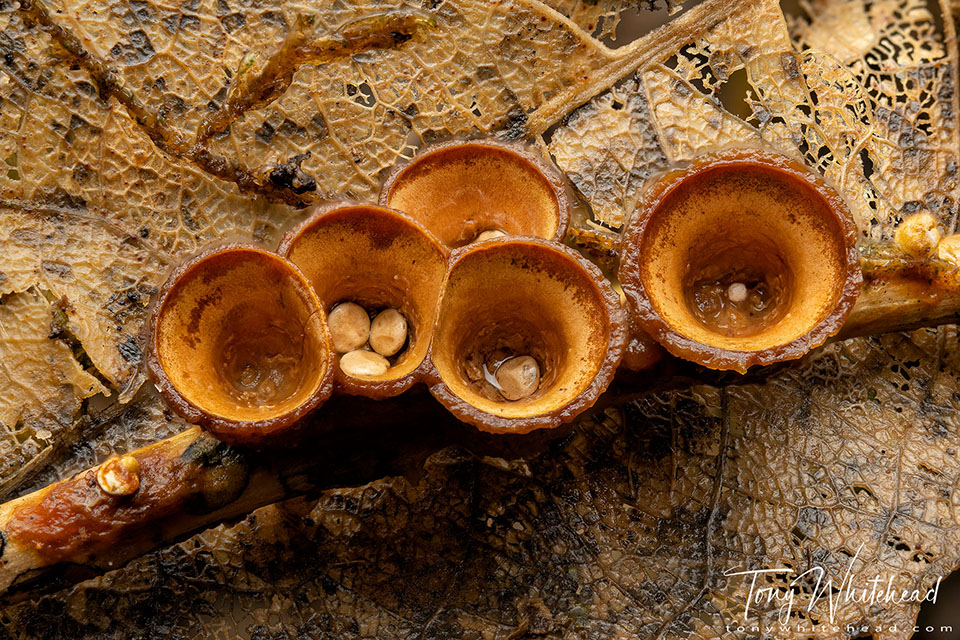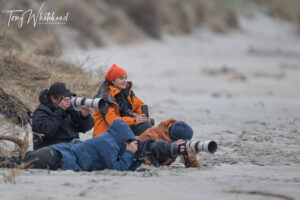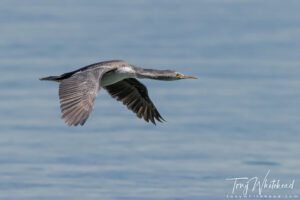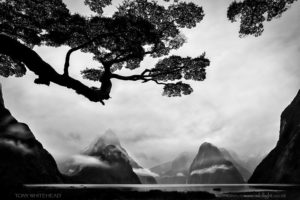One of the advantages of stumbling around a native forest at night in search of macro subjects is finding things that you have only ever previously seen photos of. Along with Peripatus, Bird’s Nest Fungi were one of those things that looked intriguing but that I had never previously seen. On the night that we found the latest Peripatus we headed down into a gully in search of Paua Slugs. We didn’t locate the slugs but did find some Bird’s Nest Fungi which to me was just as exciting.
Bird’s Nest Fungi have an interesting and unique dispersal method. Their spores are contained within capsules (peridioles) that form the “eggs” in the nest. The “nest” is shaped such that a drop of water landing in it splashes the capsules out with a trajectory that achieve dispersal of up to a metre.
Initially the cup is covered by a cap as the peridioles mature. This cap then ruptures when the spores are ready for dispersal. In this genus Crucibulum (and Cyathus spp) the peridioles have a coiled cord with a sticky end that attaches them to the cup. When ejected by a water drop this snaps and then sticks at the landing point to secure the peridiole to develop into a new fruiting body. The peridioles of the genera Nidularia and Nidula are sticky in themselves so do not have the attached cord.
The above photo shows a range of stages of the Bird’s Nest Fungus. On the left is an immature fruiting body with cap intact. Second from right is a mature one with freshly ruptured cap. The one on the right has a full nest of eggs with one peridiole incompletely ejected and still attached by the thread. The final one second from left is mature with most eggs already dispersed.
This final photo shows a cluster of mature Bird’s Nest Fungi with most peridioles ejected. On the left end of the twig is an attached peridiole just beginning to develop into a new fruiting body.
For more information on Bird’s Nest Fungi see Exploring the Kaimai Bush or Landcare Research.
Photos with Nikon Z7 and Nikkor 60mm micro lens with 12mm extension tube and homemade flash diffusion panel. All images are multiple exposures stacked in Helicon Focus.
